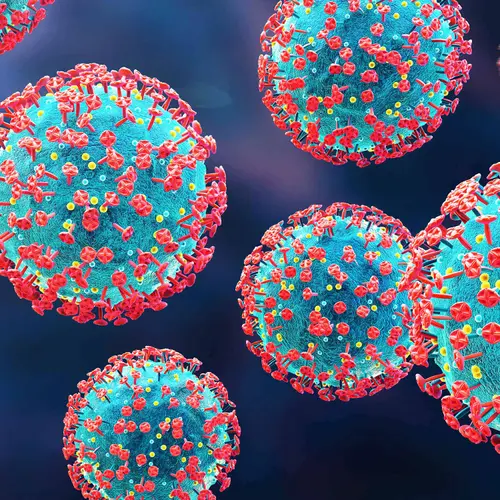Women with the human immunodeficiency virus (HIV) are six times more likely to develop cervical cancer than women without HIV. In fact, HIV is responsible for around 5% of all cervical cancer cases worldwide. It’s also the leading cause of death among women living with HIV. So, what’s the link? Here’s a look at what science says.
The Link Between HIV and Cervical Cancer
If you have HIV, you are more likely to have a human papillomavirus (HPV) infection; it’s caused by the virus that is commonly associated with cervical cancer.
Both HIV and HPV are sexually transmitted infections caused by different viruses. They spread through bodily fluids you might exchange during vaginal or anal sex. But unlike HIV, HPV can also spread through oral sex and close skin-to-skin contact. HIV has a very low risk of spreading through oral sex.
With both HIV and HPV, you may not know if you have it and spread it unknowingly. With HPV, it can be years before you notice symptoms.
The two viruses are not medically linked. But research shows that if you have HIV, you’re more likely to get an HPV infection. And because HIV weakens your immune system, it’s harder for the HPV infection to clear up on its own over time.
If this happens, you’re at a higher risk to develop abnormal precancerous cells in the cervix called cervical intraepithelial neoplasia (CIN). This is four to five times more common in people with HIV. If CIN is left untreated, it can progress to become cervical cancer. And if you have HPV, you’re twice as likely to get HIV.
Complications When You Have Both HIV and Cervical Cancer
In 9 out of 10 cases, an HPV infection goes away on its own, usually within 2 years. But if it doesn’t go away, it may raise the odds for cervical cancer among other diseases.
If you have a healthy immune system, it may take 15-20 years for cervical cancer to develop. But if you live with HIV and weakened immunity, this process may speed up to just 5-10 years instead.
Other risks include:
- Higher chance for faster cancer growth
- Less likely for a tumor or cancer cells to shrink
- More likely for cancer to come back after treatment
The CDC lists cervical cancer as an “AIDS-defining illness.” Meaning if you have it, you may be diagnosed with an advanced form of HIV infection known as AIDS. Moreover, people with both HIV and cervical cancer are more likely to die than those without both conditions.
Who Does It Affect Most?
Cervical cancer is usually treatable if it’s found early. According to research, your risk for it varies depending on where you live. Due to unequal access to prevention and management methods, HIV and cervical cancer disproportionately affect those who live in low-income countries.
If you live in a high-income country like the U.S. and some other Western countries, the number of women with cervical cancer who also live with HIV is about 5% of the cases among 122 countries. This is because there are advanced prevention guidelines in place such as:
- HIV screenings for early detection and treatment options
- Safe and effective HPV vaccines
- Cervical cancer screenings
But access to screenings can vary in the U.S., too. One study found that Black and Hispanic women with HIV are more likely to get a cervical cancer diagnosis than white women.
In low- and middle-income countries that have high rates of HPV and HIV, HIV-infected women have an increased risk for cervical cancer. In fact, in nine Southern and Eastern African countries, 40% of women with cervical cancer also have been diagnosed with HIV. It is estimated that among six of these countries, women living with HIV and cervical cancer make up about half of the cases of HIV/HPV co-infected women worldwide.
According to one study, only 27% of women aged 30 to 49 in Zambia have received screening for cervical cancer.
Proper treatment and regular screening options are not readily available or accessible. Globally, in certain countries, the HPV vaccine is available to only about a third of the female population.
What Can You Do to Avoid HPV and Cervical Cancer?
If you live with HIV, the best way to prevent HPV is to get an FDA-approved vaccine. The vaccine is safe and effective and protects you against several diseases including cervical cancer.
According to the CDC guidelines, HPV vaccines are recommended for:
- All preteens around ages 11-12
- Everyone through age 26, if you’re not already vaccinated
To lower your risk for cervical cancer, the CDC recommends you get the Pap test and the HPV test to prevent cervical cancer or find it early.
Pap test. Also known as a pap smear, the test is done to look for precancers and abnormal cell changes on the cervix that might become cervical cancer if left untreated. You can start getting one at age 21. If the test comes back normal, your doctor may tell you to wait 3 years.
HPV test. This test looks for the virus that causes cervical cancer. You can combine it with the Pap test. This is called co-testing. For women with HIV who are 30 or older, this is often performed as routine screening (some women with HIV continue to get pap testing without routine HPV screening). If negative, the test is repeated every 3 years.
Globally, to reduce deaths from cervical cancer in women with HIV, especially in low- and middle-income countries, the United Nations joint program on HIV/AIDS recommends:
- Health education, including age-appropriate sex education
- HPV vaccination for adolescent girls
- Screening all women at risk of developing cervical cancer
- Screening programs should include HIV counseling, testing, and treatment
- Treatment of precancerous cervical lesions and invasive and advanced cervical cancer

